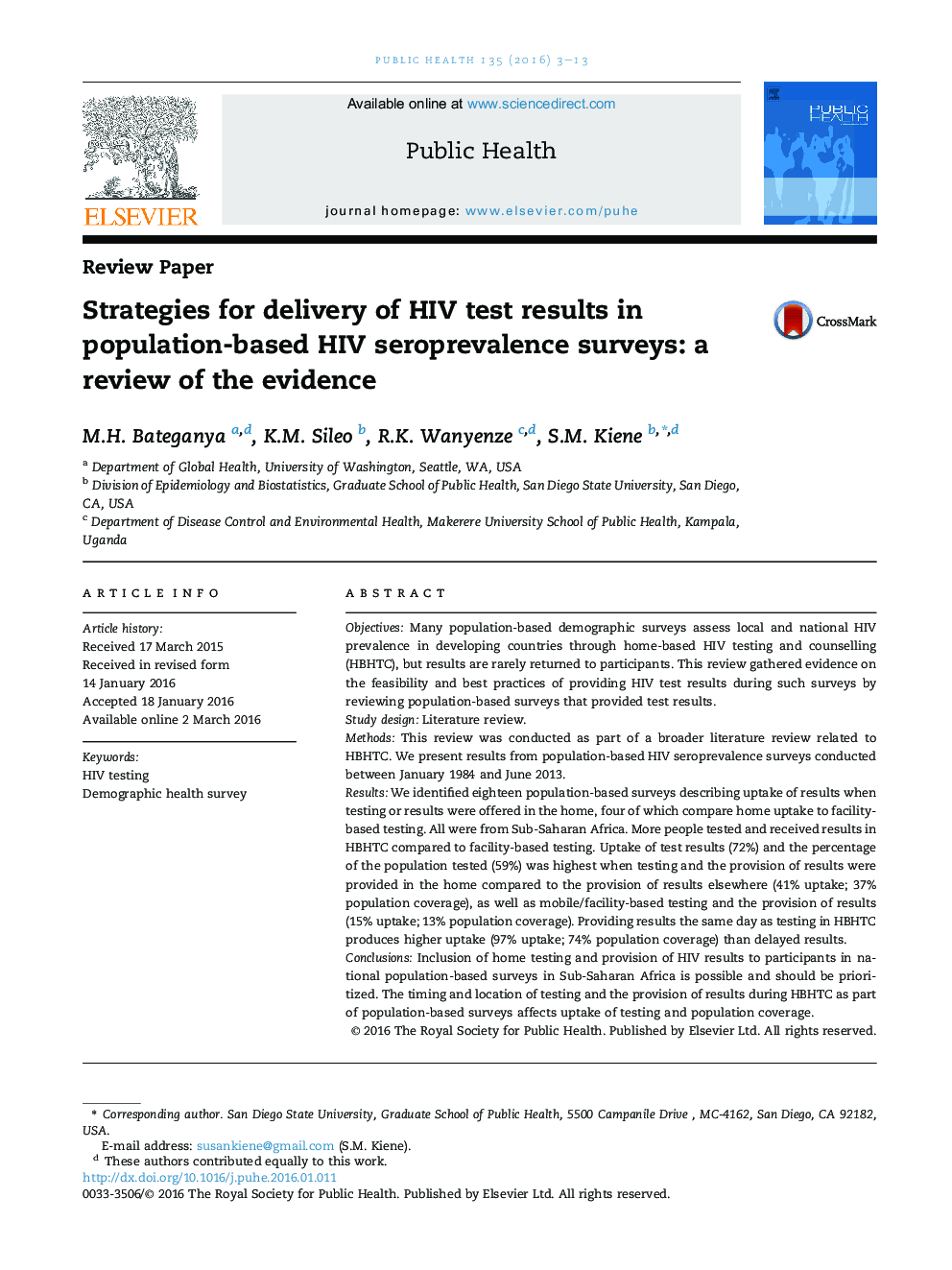| کد مقاله | کد نشریه | سال انتشار | مقاله انگلیسی | نسخه تمام متن |
|---|---|---|---|---|
| 1087279 | 1487208 | 2016 | 11 صفحه PDF | دانلود رایگان |
• More people tested and received results in HBHTC compared to facility-based testing.
• Uptake of HIV test results was highest when testing and the provision of results were provided in the home.
• The percentage of the population tested was highest when testing and results were provided at home.
• Providing results the same day as testing in HBHTC produces higher uptake than delayed results.
ObjectivesMany population-based demographic surveys assess local and national HIV prevalence in developing countries through home-based HIV testing and counselling (HBHTC), but results are rarely returned to participants. This review gathered evidence on the feasibility and best practices of providing HIV test results during such surveys by reviewing population-based surveys that provided test results.Study designLiterature review.MethodsThis review was conducted as part of a broader literature review related to HBHTC. We present results from population-based HIV seroprevalence surveys conducted between January 1984 and June 2013.ResultsWe identified eighteen population-based surveys describing uptake of results when testing or results were offered in the home, four of which compare home uptake to facility-based testing. All were from Sub-Saharan Africa. More people tested and received results in HBHTC compared to facility-based testing. Uptake of test results (72%) and the percentage of the population tested (59%) was highest when testing and the provision of results were provided in the home compared to the provision of results elsewhere (41% uptake; 37% population coverage), as well as mobile/facility-based testing and the provision of results (15% uptake; 13% population coverage). Providing results the same day as testing in HBHTC produces higher uptake (97% uptake; 74% population coverage) than delayed results.ConclusionsInclusion of home testing and provision of HIV results to participants in national population-based surveys in Sub-Saharan Africa is possible and should be prioritized. The timing and location of testing and the provision of results during HBHTC as part of population-based surveys affects uptake of testing and population coverage.
Journal: Public Health - Volume 135, June 2016, Pages 3–13
